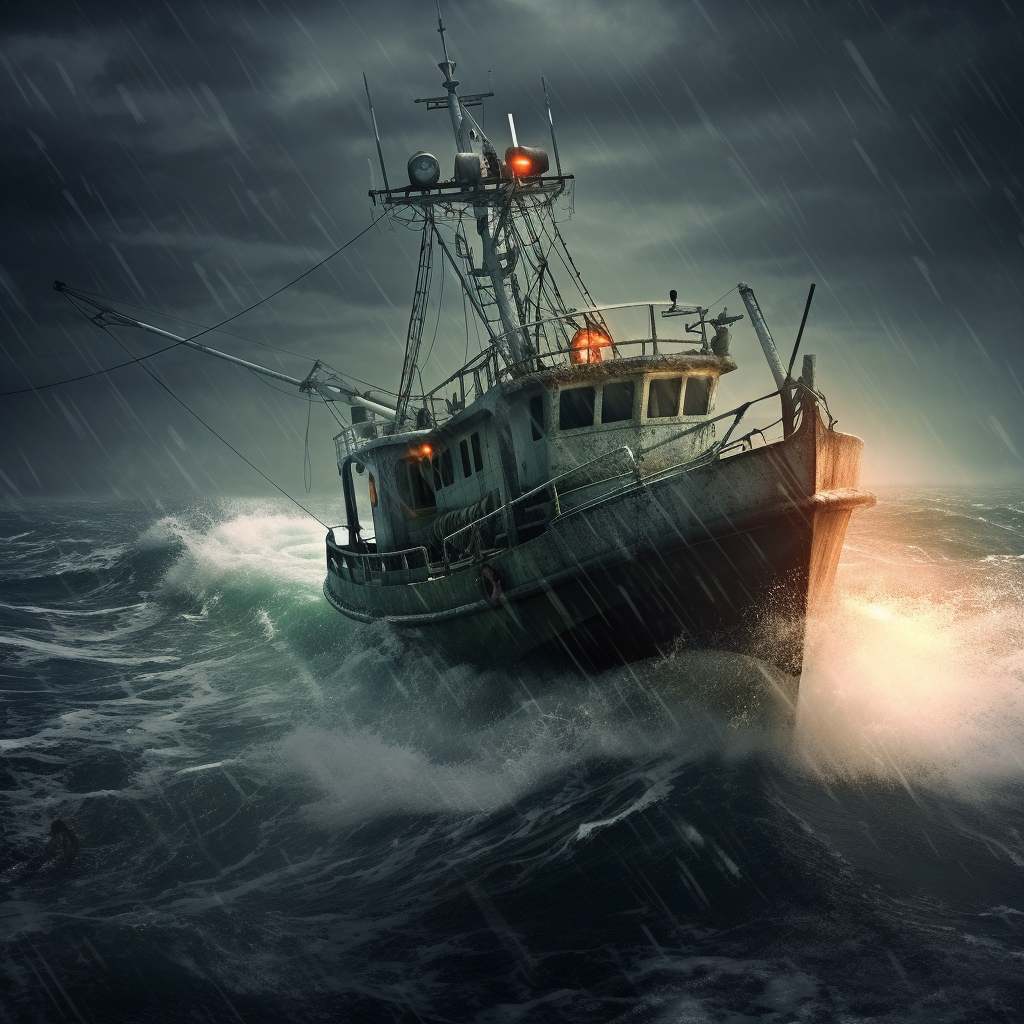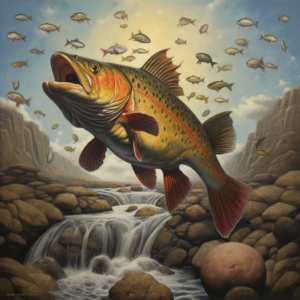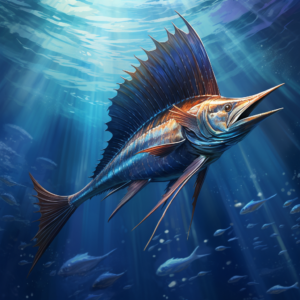Welcome to the exciting world of saltwater fishing! If you’re ready to embark on a fishing adventure in American waters, you’ve come to the right place. In this comprehensive guide, we’ll take you through everything you need to know about saltwater fishing. From the basics of fishing gear to mastering essential fishing techniques, you’ll be equipped to tackle the intriguing depths of the ocean.
Whether you’re a seasoned angler or a beginner, saltwater fishing offers a unique experience that’s second to none. With its vast expanse of water and diverse marine life, saltwater fishing is an exhilarating sport that requires skill, patience, and the right equipment. In this guide, we’ll provide you with all the important details to help you get started with saltwater fishing.
We’ll explore the essentials of fishing gear, fishing techniques, fishing spots, and more, giving you a solid foundation of knowledge. So, get ready to learn all about saltwater fishing and discover why it’s one of the most popular outdoor activities in America. Let’s dive in!
Exploring the Intriguing Depths of Saltwater Fishing
As you gear up for your saltwater fishing adventure, it’s crucial to understand the complexities of this exhilarating sport. One of the most important elements of preparation is selecting the right fishing equipment to suit your needs. From fishing rods and reels to bait and lures, the right gear is key to a successful fishing trip.
Another aspect to consider is mastering essential fishing techniques. Saltwater fishing requires a different skill set than freshwater fishing due to the vastness of the ocean and the size of the potential catches. Trolling, jigging, and bottom fishing are just a few of the techniques you’ll need to learn to reel in the big fish.
But don’t worry, with the right fishing tips and guidance, you’ll be well on your way to becoming a skilled saltwater angler. In the next section, we’ll delve deeper into the world of fishing equipment and techniques to help you make the most of your fishing experiences.
Essential Fishing Gear for Saltwater Anglers
When it comes to saltwater fishing, having the right gear is essential. Here are some of the must-have fishing tackle and equipment that every angler should have in their arsenal:
Fishing Rods: choose a rod that is suitable for the type of fishing you plan to do, whether it’s surfcasting, trolling, or jigging. Look for a rod with a sturdy construction and flexible tip that can handle the weight of your target catch.
Fishing Reels: select a reel that matches your rod and fits comfortably in your hand. Saltwater reels should be made of corrosion-resistant materials to withstand the harsh saltwater environment.
Fishing Line: use a braided or monofilament line that can handle the weight of your target catch. Be sure to choose a line with a high pound test to avoid breakage.
Hooks and Bait: select hooks that are appropriate for the size of the fish you are targeting. Live bait such as shrimp, squid, and worms are great options for attracting saltwater fish.
Lures: use lures that mimic the appearance and movement of the fish that you are targeting. Choose from a variety of spoons, jigs, and soft plastics to increase your chances of catching fish.
Fishing Accessories: don’t forget to bring essential fishing accessories such as pliers, scissors, a knife, and a tackle box to keep your gear organized.
Investing in quality fishing gear is crucial for a successful saltwater fishing trip. By having the right equipment, you can increase your chances of catching the big ones and make the most of your fishing experience.
Mastering the Art of Saltwater Fishing Techniques
When it comes to saltwater fishing, having the right gear is only half the battle. The right knowledge and proper techniques can make all the difference in your success on the water. Here are some essential fishing techniques and tips to help you master the art of saltwater fishing:
Casting
One of the most important skills for saltwater fishing is casting. Proper casting techniques can help you reach the fish in areas that are difficult to access. It’s important to practice casting in different weather conditions and understand how the wind may affect your cast. Aim to cast past the area where you believe the fish may be and allow your bait or lure to fall naturally into the water.
Trolling
Trolling is a popular fishing technique that involves dragging bait, lures, or rigs through the water as you move your boat. This technique allows you to cover more ground and find actively feeding fish. When trolling, it’s important to vary your speed and the depth at which you are fishing to find the most productive depths for the fish you are targeting. Keep a close eye on your rod and reel as you troll, as this is often how strikes are detected.
Bottom Fishing
Bottom fishing is a technique where you fish along the ocean floor looking for prey. Whether you are targeting flounder, red snapper, or grouper, bottom fishing can be incredibly rewarding if done correctly. Use a fish finder to locate structures on the ocean floor, as these can be prime spots for bottom-dwelling fish. When dropping your bait or lure, make sure it reaches the bottom and then slowly reel it in, keeping a close eye on your rod for any bites or tugs.
Using Live Bait
Live bait is a popular choice for saltwater fishing as it can be irresistible to feeding fish. When using live bait, it’s important to keep it alive and healthy until you are ready to use it. This may mean investing in a bait tank or cooler to keep your bait fresh throughout the day. Additionally, when using live bait, it’s important to stay attentive to your rod and be ready to set the hook at the first sign of a bite.
Fishing Tides and Currents
The tides and currents play a crucial role in saltwater fishing, affecting the location and behavior of fish. Learn how to read tide charts and pay attention to the currents in the area you are fishing. Fish tend to feed more during incoming tides and slack tides, while outgoing tides can be more challenging. Understanding the tides and currents can help you find the best fishing spots and increase your chances of success on the water.
Remember, mastering the art of saltwater fishing techniques takes time and practice. Don’t be discouraged if you don’t catch fish right away, but rather use every trip as an opportunity to learn and improve your skills.
Whether you are a beginner or an experienced saltwater angler, mastering these essential fishing techniques can help you become a skilled and successful angler. With these fishing tips and techniques, you’ll be one step closer to reeling in trophy-worthy catches on your next saltwater fishing trip.
Planning Memorable Saltwater Fishing Trips
Planning a saltwater fishing trip can be an exciting and rewarding experience, but it requires a bit of preparation to ensure a successful journey. To start, research the best fishing spots in America for the specific fish species you’re interested in catching. You can also consider hiring a fishing guide to show you the ropes and take you to the best fishing spots.
Pro Tip: Remember to check fishing regulations and obtain any necessary permits or licenses before embarking on your fishing trip.
When planning your trip, take into account the best time of year for the fish you’re targeting. Some fish may be more prevalent during certain seasons or tides, so it’s important to do your research beforehand. Additionally, make sure to pack the appropriate fishing gear and equipment for the trip. This may include extra fishing line, hooks, lures, and bait.
Aside from the actual fishing, consider other activities to do in the area, such as visiting local attractions or indulging in delicious seafood cuisine. You can also book a fishing charter for a unique and all-inclusive experience.
Pro Tip: Don’t forget to check the weather forecast before your trip and pack appropriate clothing and gear to stay comfortable on the water.
With these tips in mind, you can plan a memorable saltwater fishing trip that suits your preferences and interests. Whether you’re a seasoned angler or a novice, there’s always something new to discover and learn in the vast ocean.
Knots Every Saltwater Fisherman Should Know
A great catch can easily become a lost catch if your knot tying skills are not up to par. As a saltwater fisherman, it is essential to know how to tie strong knots that can withstand the power of the ocean and the strength of the fish you are targeting. Here are a few knots every saltwater fisherman should know:
Palomar Knot
The Palomar Knot is a popular knot for saltwater fishing as it is strong and can be used with both braided and monofilament fishing lines. To tie this knot, double your fishing line and pass it through the eye of your hook. Tie a simple overhand knot, then pass the looped end of the fishing line over the hook. Tighten the knot by pulling both ends of the line.
Bimini Twist Knot
The Bimini Twist Knot is a bit more complex than the Palomar Knot, but it is extremely strong and can be used for catching larger fish species. To tie this knot, create a loop with your fishing line and then twist it 20 times. Take the doubled line and pull it through the loop, then twist it another 20 times. Repeat this process until you have created a small loop. Finally, tie the tag end to the double line with an Albright Knot.
Blood Knot
The Blood Knot is commonly used to tie two pieces of line together, making it useful for attaching a leader to your main line. To tie this knot, overlap the two lines you want to join and wrap one of the lines around the other five to seven times. Do the same with the second line, but wrap it in the opposite direction. Pass the ends of the lines through the center of the knot, then tighten and trim the tag ends.
There are many other knots that can be useful for saltwater fishing, but mastering these three knots is a great place to start. By ensuring that your knots are strong and secure, you’ll increase your chances of landing big catches and having successful fishing trips overall.
Discovering the Best Saltwater Fishing Spots in America
Whether you’re a seasoned angler or just starting out, finding the right fishing spot is crucial for a successful saltwater fishing trip. America is home to a diverse range of fishing spots that offer unique environments and catch opportunities. Here are some of the best saltwater fishing spots in America that you won’t want to miss:
“The Florida Keys is a saltwater fisherman’s paradise. From the shallow waters of the flats to the iconic Seven Mile Bridge, you’ll find a variety of fish species including tarpon, bonefish, and permit. Don’t forget to visit the world-renowned Islamorada for some of the best offshore fishing in the country.”
The West Coast of America is also a prime location for saltwater fishing, especially in California. Catalina Island and Newport Beach are popular spots for fishing yellowtail, barracuda, and halibut. You can also head to San Diego for exciting offshore fishing where you might even reel in a bluefin tuna.
The Gulf of Mexico is another hotspot for saltwater fishing, with Louisiana and Texas offering some of the best fishing experiences. Head to Venice, Louisiana for a chance to catch a giant yellowfin tuna or visit Port Aransas, Texas for thrilling redfish and speckled trout fishing.
When planning your saltwater fishing trip, it’s important to do your research and understand the local regulations and fishing restrictions. Hiring a local guide or charter is always a good idea to ensure you have the best chance for success. Don’t forget to pack your fishing gear and practice your fishing techniques before hitting the water.
Now that you know some of the best saltwater fishing spots in America, it’s time to start planning your next fishing adventure. Whether you prefer fishing from the shore or venturing into deep waters, America has plenty of fishing spots to cater to every angler’s needs. So, grab your fishing gear and head to one of these top spots for an unforgettable saltwater fishing experience.
Conclusion
Congratulations! You’ve reached the end of our guide to saltwater fishing. We hope that by now, you have a better understanding and appreciation for the sport of deep sea angling.
Always remember to respect the ocean and follow fishing regulations to protect the environment and the populations of marine creatures that call it home. Safety should always be your top priority while on your fishing adventures, so make sure to equip yourself with the right fishing gear, master essential techniques, and plan your trips carefully.
With your newfound knowledge and skills, you’re ready to embark on unforgettable saltwater fishing trips in American waters. Whether you’re a beginner or a seasoned angler, there’s always something new to discover in the intriguing depths of saltwater fishing. So, get ready to cast your line, feel the rush of adrenaline, and reel in your next trophy-worthy catch!
FAQ
Q: What are some essential fishing gear for saltwater angling?
A: Some essential fishing gear for saltwater angling includes fishing rods, reels, bait, lures, fishing line, leaders, hooks, sinkers, and tackle boxes.
Q: What are some popular saltwater fishing techniques?
A: Some popular saltwater fishing techniques include casting, trolling, bottom fishing, jigging, and fly fishing.
Q: How do I choose the right fishing spot for saltwater fishing?
A: When choosing a fishing spot for saltwater fishing, consider factors such as water depth, currents, structure (such as reefs or underwater formations), and the presence of baitfish or other marine life.
Q: What are some important fishing knots to know for saltwater fishing?
A: Some important fishing knots to know for saltwater fishing include the improved clinch knot, Palomar knot, uni knot, and loop knot.
Q: Are there any fishing regulations I should be aware of for saltwater fishing?
A: Yes, it is important to be aware of fishing regulations such as size and bag limits, fishing seasons, and any specific restrictions or closures in the area you plan to fish. Always check local fishing regulations before heading out.




